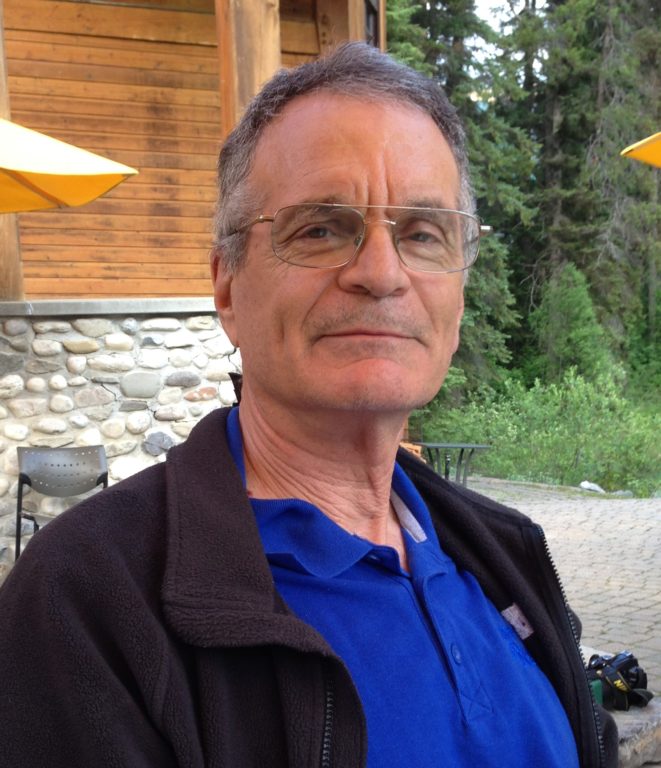Member Profile
January 26th, 2022

Ken Ashton, P.Geo., FGC, FEC (Hon.)
I grew up in a family of four in Toronto but spent summer vacations at a cottage surrounded by forest, lakes and rocks, and later, camping, which opened my eyes to both nature and exploring new places. My early interest in rocks and minerals, together with my acquired love for the outdoors, led me to pursue a career as a field geologist in the Precambrian Shield.
I obtained my B.Sc. degree from the University of Toronto (1975) but, by the end of third year, I still had no field experience, which is not ideal for an aspiring field geologist. Fifty typed letters to mining and exploration companies eventually landed me one positive response.
It was for a summer job helping explore for lead-zinc deposits on an Arctic island in the barrens. That job came with July blizzards, pristine fossils, daily helicopter flights, sightings of muskoxen and caribou and being left out overnight. It wasn’t the Precambrian Shield, but I was hooked!
The following summer, I began a field-based M.Sc. project in northern Saskatchewan at the University of Saskatchewan. That experience led to eight summers working as an assistant, mapping various parts of the Northwest Territories and Nunavut with the Geological Survey of Canada (GSC), which included the field work for my PhD. thesis at Queens University (1988).
While competing my PhD., I obtained a four-year contract with the GSC to map in northern Saskatchewan between 1985-1988, which was followed by a one-year contract in 1989 with the Manitoba Geological Survey to extend my mapping eastward.
The Saskatchewan experience led to a permanent job as a Precambrian Geologist with the Saskatchewan Geological Survey. Membership in APEGS is a condition of employment for geologists working with the Saskatchewan Geological Survey, so I joined when the Engineering and Geoscience Professions Act came into effect in 1997.
My job as the Saskatchewan Geological Survey’s Precambrian Geologist was to help discover mineral deposits by determining and documenting as much of the roughly 3.3 billion years of geological history as possible. It was daunting work, but immensely satisfying when new pieces came together.
Soon after I arrived in Regina to work for the Saskatchewan Geological Society, I became an Adjunct Professor at the University of Regina. That experience was also richly rewarding. It involved some classroom teaching, successful collaborations with university faculty, as well as co-supervision of B.Sc. and graduate students, many of whom discovered their thesis projects while working with me as summer field assistants.
In 2021, I retired from the Saskatchewan Geological Survey. Retirement still feels new to my wife and I. Our two children are now following their own life paths, but our lives remain full. I continue to work on geological projects that have spilled over from my working days, and otherwise enjoy reading, nature photography, and spend as much time as possible hiking, cycling, cross-country skiing, and filling bird feeders at our cottage.
I learned about the requirement to be licensed with APEGS since membership in APEGS is a condition of employment for geologists working with the Saskatchewan Geological Survey and my colleagues, Gary Delaney, P.Geo., FGC, FEC (Hon.) and Fran Haidl, P.Geo., FGC, FEC (Hon.) helped to put the act together.